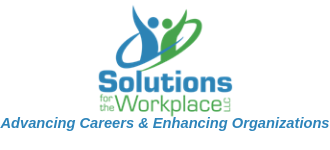We all get nervous when it comes to interviewing. And if you are one of those who say that if you could just get the interview, you’ll ace it, you should be nervous! Interviews are not the time to wing it; preparation and planning is the key.
Interviews, whether in person, via videoconference, or on the phone, all require that you promote yourself, your qualifications, and your accomplishments. Here are 5 tips to make the interviewers love you:
Tip #1: Show your interest in the organization and the job. Be ready to articulate why the specific job and organization are a fit for you; know why you are applying (and saying you want a promotion is not the right answer!) and how this particular position leverages your skills, experience, and interests.
Tip #2: Research the organization, the position, interview panel members, and hiring manager. Google the organization; review their website, recent press, and strategic plan, as well as how the position fits into the organization’s strategy and mission. Check out your interview panel and hiring manager on LinkedIn so you can learn a little bit about their background and use that information to connect with them. This is not stalking—this is doing your research!
Tip #3: Be ready for “tell me about yourself,” and recognize that this is not a chance to share your biography. This is your opportunity to highlight your skills, experience, and accomplishments in a couple of pithy sentences. Of course, you want to tailor your response to the specific job you’re interviewing for. Practice your answer out loud and time it; aim for 45 – 60 seconds.
Tip #4: Have CCAR stories ready. You want to answer interview questions with specific examples / stories of your experience. The best framework to use for telling your stories is CCAR: context, challenge, action, result. Here’s an example:
Context: “I work as an IT specialist at a small local government agency. About a year after I started, the Director decided to update the agency’s website, my job was to test and launch the new website after it had been designed and developed.”
Challenge: “This was challenging because the website was 5 years old, used old technology, and no updates had been made since the original launch. In addition, I was given only 2 weeks for testing and launching—there was a lot of pressure.”
Action: “First, I created a comprehensive testing strategy and schedule for reviewing all of the new website’s content and graphics. I established daily check-ins with testers to ensure all timelines were met and all issues were identified and addressed. I also did a “soft launch,” to ensure that the new website worked in real time. To ensure user feedback during the soft launch, I added a pop-up short survey to encourage input from actual customers. Finally, I drafted a regular update schedule so that the new website would remain fresh in terms of content, as well as programming.”
Result: “As a result of these efforts, I launched a new website within the timeframe allotted to update it. Our agency receives a lot of positive feedback on the new website and it now serves as a model for other local government agencies’ websites. In addition, use of the updated website increased 20% within 6 months of updating.”
Tip #5: Use “I” when answering questions: While most of us grew up hearing that it is wrong to brag, there’s no “I” in team, etc., an interview is not the time to be self-effacing. Even though most of us operate as part of a larger team, most interviewers want to know about your personal contributions. You’ll need to temper your use of “I” so that you don’t off as a braggart and give credit to a group effort when due, but don’t forget that hiring managers are hiring YOU, and not your team.
